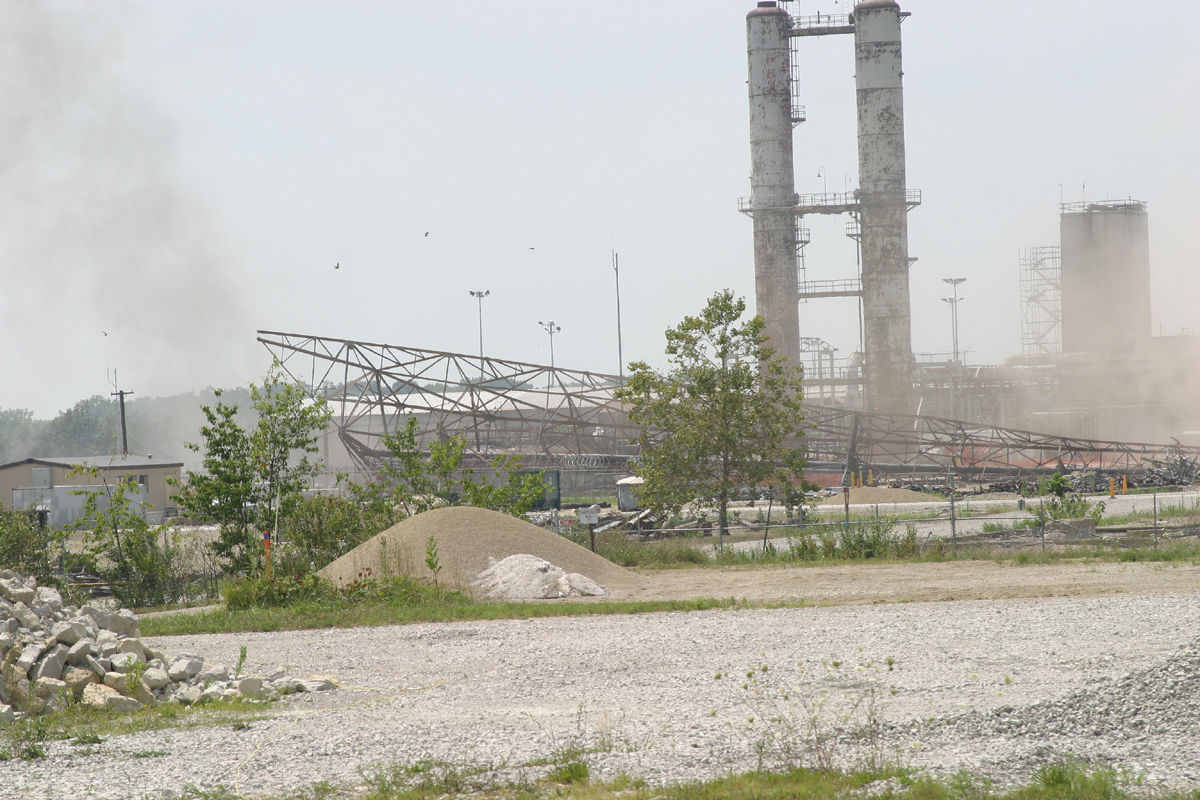On December 28, 2006, the U.S. Army Chemical Materials Agency (CMA) Non-Stockpile Chemical Materiel Project (NSCMP), now U.S. Army Chemical Materials Activity (CMA) Recovered Chemical Materiel Directorate (RCMD) completed demolition of the nation’s former chemical warfare production facilities. This completion was a direct task from the Department of Defense resulting from the United States’ ratification of the Chemical Weapons Convention (CWC). This treaty required all production facilities to be destroyed by April 29, 2007, a milestone the United States reached four months early. As part of the CWC, reports on the former production facility demolition were provided to the Organisation for the Prohibition of Chemical Weapons (OPCW) executive council, an international organization that oversees implementation of and compliance with the CWC.
Former Production Facilities Demolition

RCMD Fact Sheets
- Characteristics of Mustard (Blister) Agents
- Chemical Agent Identification Sets
- Chemical Agent Identification Sets Bottle Holder for EDS (Poster)
- Chemical Weapons Destruction Expertise
- DF (Methylphosphonic Difluoride)
- Digital Radiography and Computed Tomography System (DRCT)
- Explosive Destruction System (EDS) Overview
- Former Production Facilities Demolition
- German Traktor Rockets at Pine Bluff Arsenal
- High Energy X-ray Generator
- Interim Holding Facility (IHF)
- Large Item Transportable Access and Neutralization System (LITANS)
- Magnetic Induction Decontamination System (MIDS)
- Managing Secondary Waste
- Materiel Assessment Review Board (MARB)
- Mobile Munitions Assessment System (MMAS)
- Multiple Round Container (MRC)
- Munitions
- Non-Intrusive Threat Detection System (NITDS)
- Phosgene Carbonyl Chloride
- Pine Bluff Explosive Destruction System (PBEDS)
- Portable Isotopic Neutron Spectroscopy (PINS)
- QL (Diisopropyl Aminoethylmethyl Phosphonite)
- Raman Spectrometer
- RCMD Lifecycle of Deployment
- RCMD Mission Safety
- RCMD Operations at Dover Air Force Base
- RCMD Operations at Pine Bluff Arsenal (PBA)
- RCMD Operations at Pueblo Chemical Depot (PCD)
- RCMD Overview
- Single CAIS Access and Neutralization System (SCANS)
- Transportable Detonation Chamber (TDC)
- Video: RCMD at PBA, PBEDS Campaign One
- What Are Chemical Agents & Chemical Weapons?
- What is Recovered Chemical Warfare Materiel (RCWM)
The mountain has been an element that has graced many of the past depot emblems, representing Pike’s Peak.
The Pershing Missile in the center represents one of the most prominent missions of the depot in the 1980s.
The hawk represents native depot wildlife, the present and future mission of the environmental programs, and was also the name of one of the missile systems supplied by the depot during its missile mission in the 1950s and 60s.
The branch insignia of both the U.S. Army Chemical Corps and Ordnance Corps represent the depot’s command structure through its history as both an ordnance and a chemical depot.
The colors cobalt blue and yellow gold are representative of the U.S. Army Chemical Corps. “Pueblo Depot” is representative of the installation throughout its history. “1942” is the date of establishment. “Safety” and “Service” capture the continued and historical depot missions.
The motto translates to “A Common Good.”
The rising sun denotes the dawning of a new day without chemical weapons and the organization’s mission to safely destroy chemical weapons stockpile, thus changing the future of modern warfare.
The three stalks of wheat symbolize the harvest of hope that has been secured through industry, cultivation and abundance. It also refers to the unit’s chemical/biological, smoke/obscurant and support to Homeland security industrial base missions at Pine Bluff Arsenal.
The double-headed eagle suggests the two CMA methods for stockpile chemical weapons disposal, incineration and neutralization. These methods’ roots are traced back to Project Eagle I (incinerating of mustard agents) and Eagle II (neutralizing nerve agents).
The olive branch signifies peace and the Activity’s commitment to abide by the stipulations of the Chemical Weapons Convention Treaty and assisting other nations.
The octagon alludes to the eight original chemical weapons stockpile storage sites in the United States.
